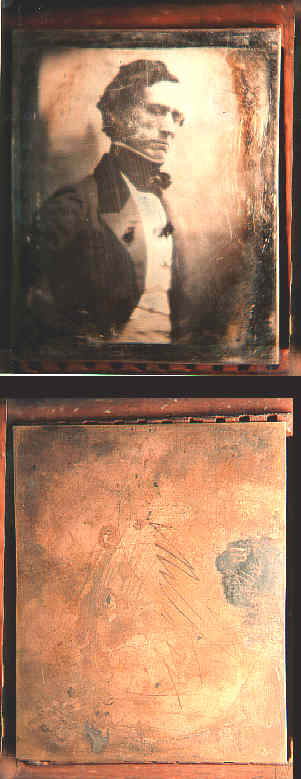
Ninth-plate
daguerreotype Plate "I"
(Writer's collection.)
|
WRITTEN ON BACK: "Milton". The significance of this name is unknown.
Possible
hypotheses
include: Lens maker. Method of plate preparation. Taker of Plate. Subject of Plate (though unlikely
because a different subject in plate J also has the same name written on the back). Considering
everything, "Milton" may have referred to a different, previously recorded subject. The plate
appears reused as was the common practice.
POSSIBLE LENS: This image was possibly taken with the lens John Draper describes
second in his sequence of lens experiments to capture a likeness of the human face. Specifically, a
lens of four inches aperture, with focal length of fourteen inches (about f 3.5). When used
outdoors in bright sunlight, this lens might provide enough depth of field to capture sharp
detail in an area as wide as the human figure.
Such a lens however, when making a relatively short
exposure in bright sunlight, might not be able to clearly delineate the vast range between bright and
shadowed portions of the photograph. Setting a camera with an exposure meter reading brightly lit
portions of a scene would have similar result--shadowed portions would not be clearly delineated.
Exactly this result is evident in plate I. Draper's article written in spring 1840 about fall 1839
experiments, describes the limitation of such a lens, and appears to exactly match the visual
evidence found in this photograph (see quotation below).
|